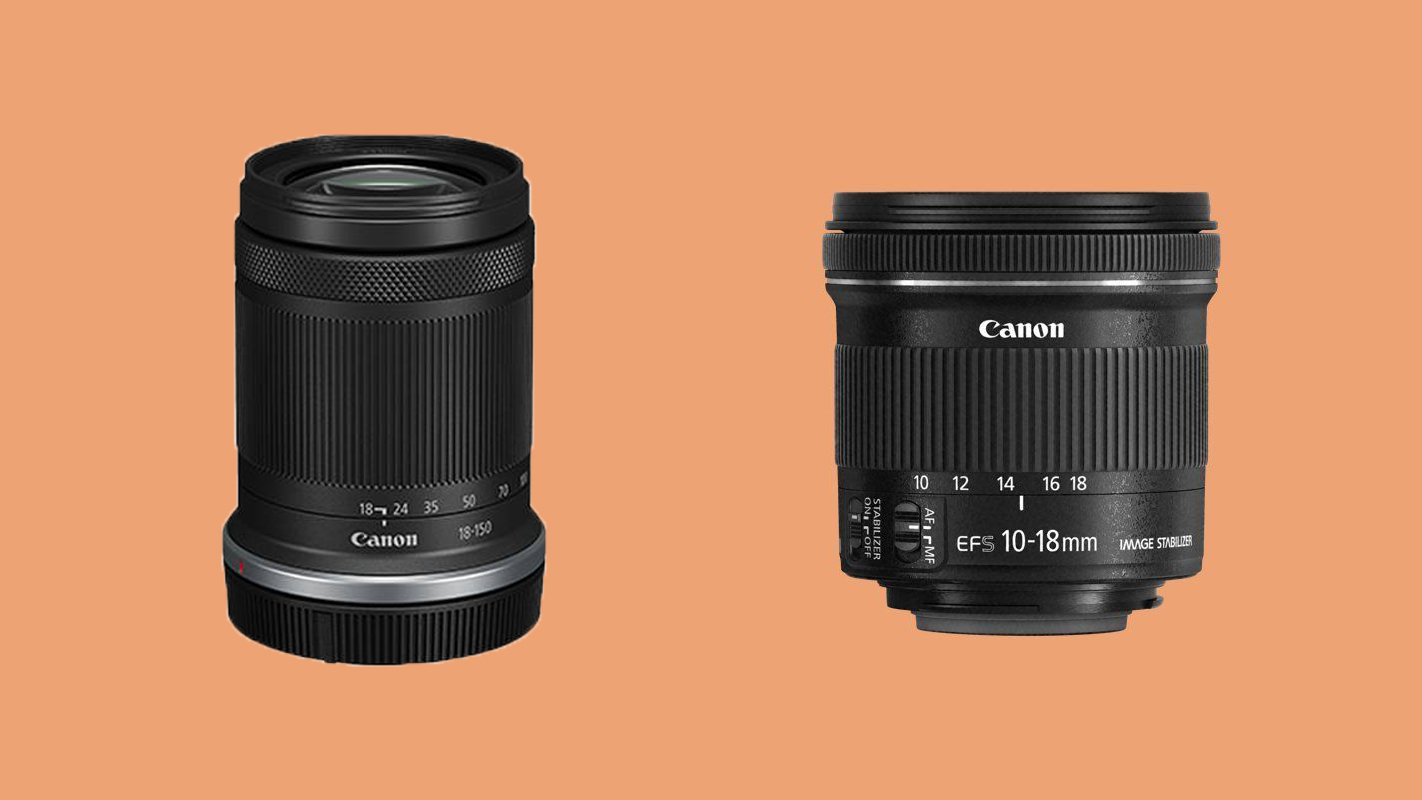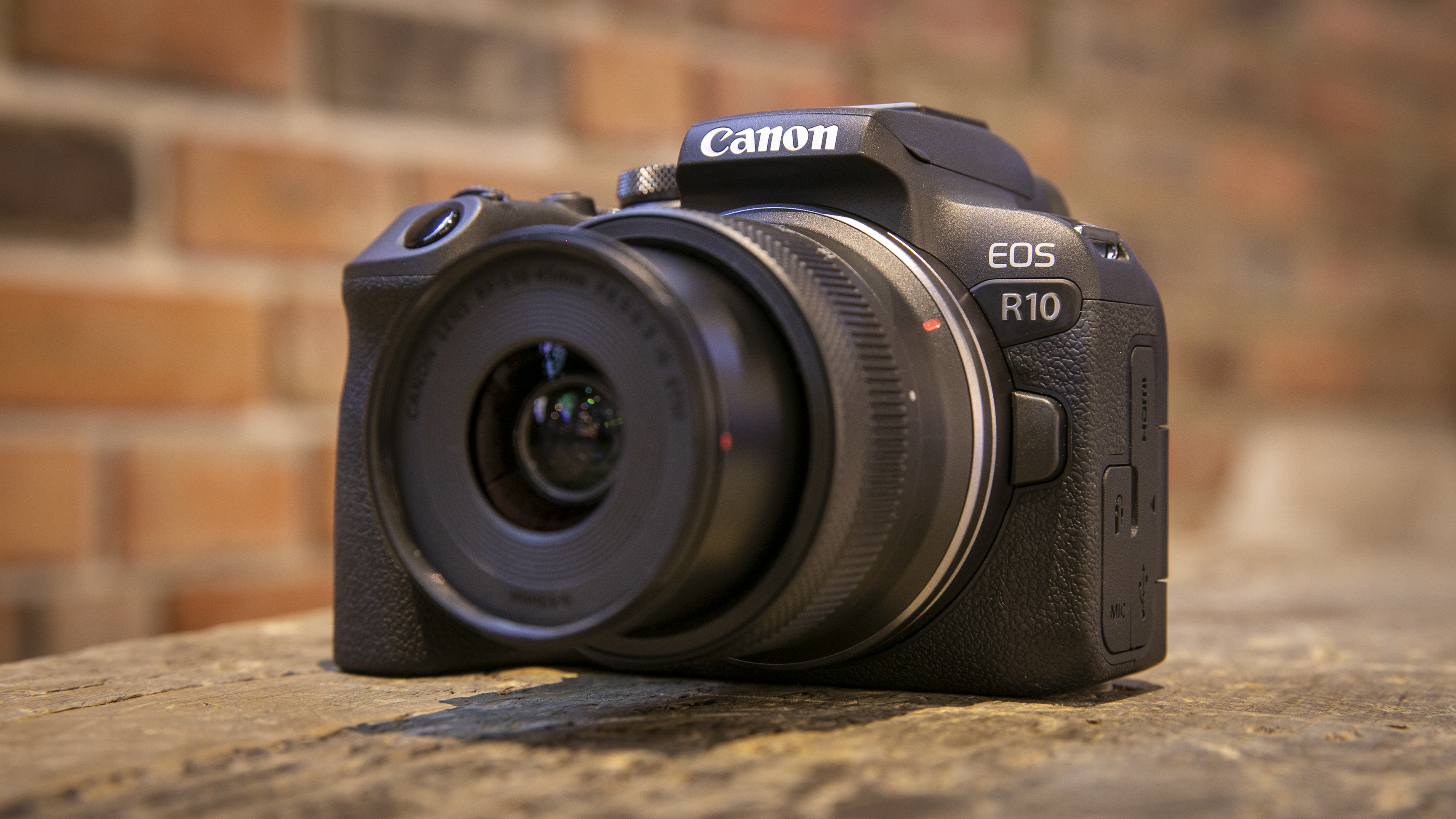Canon RF-S lenses vs Canon EF-S lenses – and what we might see next
What’s the fuss about full-frame vs APS-C sensors? There are currently only two RF-S lenses for Canon's APS-C sensor cameras, but more could be on the way

Canon recently launched the Canon EOS R7 and EOS R10 – two affordable new mirrorless cameras with APS-C sensors – along with the RF-S 18-45mm F4.5-6.3 IS STM and RF-S 18-150mm F3.5-6.3 IS STM lenses.
If you’re not familiar with 'crop-sensor' cameras, the big advantage of the smaller APS-C sensor compared to the best full frame cameras is the 1.6x crop which extends your effective focal length of lenses.
This is ideal for wildlife and sports when, for example, a 400mm focal length effectively becomes (1.6 x 400mm) 640mm. Suddenly that tiny blue tit hiding at the end of the garden becomes a frame-filling photo.
While how about putting a Canon RF 800mm f/11 on an EOS R7 or R10 to create a ridiculous 1280mm amount of reach. You could practically stay in the car park to photograph the football!
• Read more: full frame vs cropped sensor for bird photography - which is better?
However, while it’s an advantage having extra reach for subjects far away or for smaller wildlife, it’s a disadvantage when you only have 18mm for, say, big landscapes or city scenes – 18mm x 1.6 is 29mm, which isn’t very wide at all in the real world. This really restricts what you can shoot with the current two RF-S 18-45mm F4.5-6.3 IS STM and RF-S 18-150mm F3.5-6.3 IS STM lenses.
Canon RF-S lenses vs Canon EF-S lenses
Why you can trust Digital Camera World
Will Canon’s new RF-S lenses only fit APS-C EOS bodies you may be asking? This is the big question. The marked difference between Canon EF-S lenses and Canon RF-S lenses is that EF-S lenses will only fit on crop-sensor APS-C Canon EOS DSLR like the EOS 850D, EOS 90D and EOS 7D Mark II. You simply can’t use EF-S lenses on full-frame EOS DSLRs as they have an EF mount.
Whereas RF-S lenses will fit on both APS-C Canon EOS mirrorless cameras like the R7 and R10, and full-frame EOS mirrorless cameras like the EOS R6 and EOS R5; however on these cameras, they will switch to crop mode effectively turning your full-framer into an APS-C camera.
So why you can use RF-S lenses, why you’d want to put budget lenses on top spec mirrorless EOS R cameras is probably the real question. It’s like investing in a Ferrari then driving in first gear all the time. A better way round would be to put top lenses on budget bodies for better photos!
What Canon RF-S lenses will we see next?
At the big press launch in London of the new EOS R7 and R10 and RF-S lenses, Canon remained resolutely tight-lipped about any sort of Canon RF-S lens roadmap, but we’d be amazed if we don’t see at least some of the equivalent EF-S lenses with RF-S mounts and specs soon.
There are rumors rattling around online of patents for some Canon RF-S wide zooms, and with only 18mm available at the moment as the widest focal length for APS-C Canon mirrorless, it’s clear they’ll need to release an RF-S 10-22mm or similar focal length range to offer crop-sensor EOS R mirrorless users an equivalent 16-35mm full-frame.
You can use RF lenses on these APS-C EOS R bodies, however, using something like the high-priced (£2389/$2399) and heavy-weight Canon RF 15-35mm F2.8L IS USM kind of defeats the object and is out the question for entry-level enthusiasts, not to mention how nose heavy a diddy EOS R10 would feel with such a beast of a lens strapped to the front.
You can also use older Canon EF-S and EF lenses with the Canon Mount Adapter EF-EOS R on an EOS R7 or R10, but you won’t benefit from the latest technology as EF-S lenses won’t communicate as well as RF-S with EOS R bodies – eg IS and IBIS or AF won’t work or be as effective.
PhotoPlus: The Canon Magazine is the world's only monthly newsstand title that's 100% devoted to you and your Canon, so you can be sure the magazine is completely relevant to your system. Every issue comes with free video tutorials too. Subscribe and save today!
Read more:
Best mirrorless cameras
Canon RF roadmap
Best Canon RF lenses
DSLR vs mirrorless
The best camera deals, reviews, product advice, and unmissable photography news, direct to your inbox!
The former editor of PhotoPlus: The Canon Magazine, Peter has 18 years of experience as both a journalist and professional photographer. He is a hands-on photographer with a passion and expertise for sharing his practical shooting skills. Equally adept at turning his hand to portraits, landscapes, sports and wildlife, he has a fantastic knowledge of camera technique and principles.
He is the author of several published photography books including Portrait Photographer's Style Guide, and The Complete Guide to Organising and Styling Professional Photo Shoots with fellow portrait pro Brett Harkness.
Peter remains a devout Canon user and can often be found reeling off shots with his Canon EOS DSLR and EOS R mirrorless gear. He runs Peter Travers Photography, and contributes to Digital Camera magazine.
- Lauren ScottFreelance contributor/former Managing Editor



